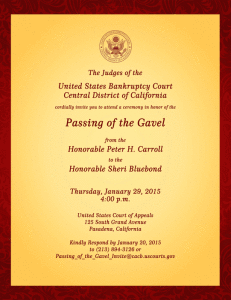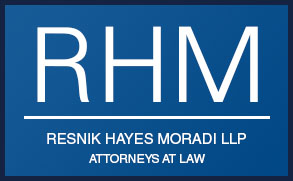More excellent work from Judge Scott Clarkson:
United States Bankruptcy Court
Central District of California
Judge Scott Clarkson, Presiding
Tuesday, December 09, 2014 Hearing Room 126
10:00 AM
6:14-22665 James Joseph Panzarello and Hilyam Panzarello Chapter 7
Motion for Relief from Stay
RE ACTION IN NON-BANKRUPTCY FORUM
Tentative for 12/9/2014 is to GRANT pursuant to 11 U.S.C. §362(d)(1) with 4001(a)(3) waiver. The request for an annulment is GRANTED.
This matter was continued from 11/25/2014 where debtor appeared, but filed no written opposition. It is the Debtor’s burden, even on annulment, to file a timely opposition.
Section 362(d) provides authorization to annul the automatic stay, which, in effect, retroactively ratifies or validates acts that otherwise violated the stay. Lone Star Sec. & Video, Inc. v. Gurrola (In re Gurrola), 328 B.R. 158, 172 (9th Cir. BAP 2005). Determining whether cause exists to annul the stay retroactively a case-by-case inquiry based on a balance of the equities. Nat’l Envtl. Waste Corp. v. City of Riverside (In re Nat’l Envtl. Waste Corp.), 129 F.3d 1052, 1055 (9th Cir. 1997). In making this determination, the bankruptcy court considers 12 factors, including:
1. Number of filings;
2. Whether, in a repeat filing case, the circumstances indicate an intention to delay and hinder creditors;
3. A weighing of the extent of prejudice to creditors or third parties if the stay relief is not made retroactive, including whether harm exists to a bona fide purchaser;
4. The Debtor’s overall good faith (totality of circumstances test):
5. Whether creditors knew of stay but nonetheless took action, thus compounding the problem;
6. Whether the debtor has complied, and is otherwise complying, with the Bankruptcy Code and Rules;
7. The relative ease of restoring parties to the status quo ante;
8. The costs of annulment to debtors and creditors;
9. How quickly creditors moved for annulment, or how quickly debtors moved to set aside the sale or violative conduct;
10.Whether, after learning of the bankruptcy, creditors proceeded to take steps in continued violation of the stay, or whether they moved expeditiously to gain relief;
11.Whether annulment of the stay will cause irreparable injury to the debtor;
12.Whether stay relief will promote judicial economy or other efficiencies. In re Fjeldsted, 293 B.R. 12, 25 (B.A.P. 9th Cir. 2003).
Read more…





